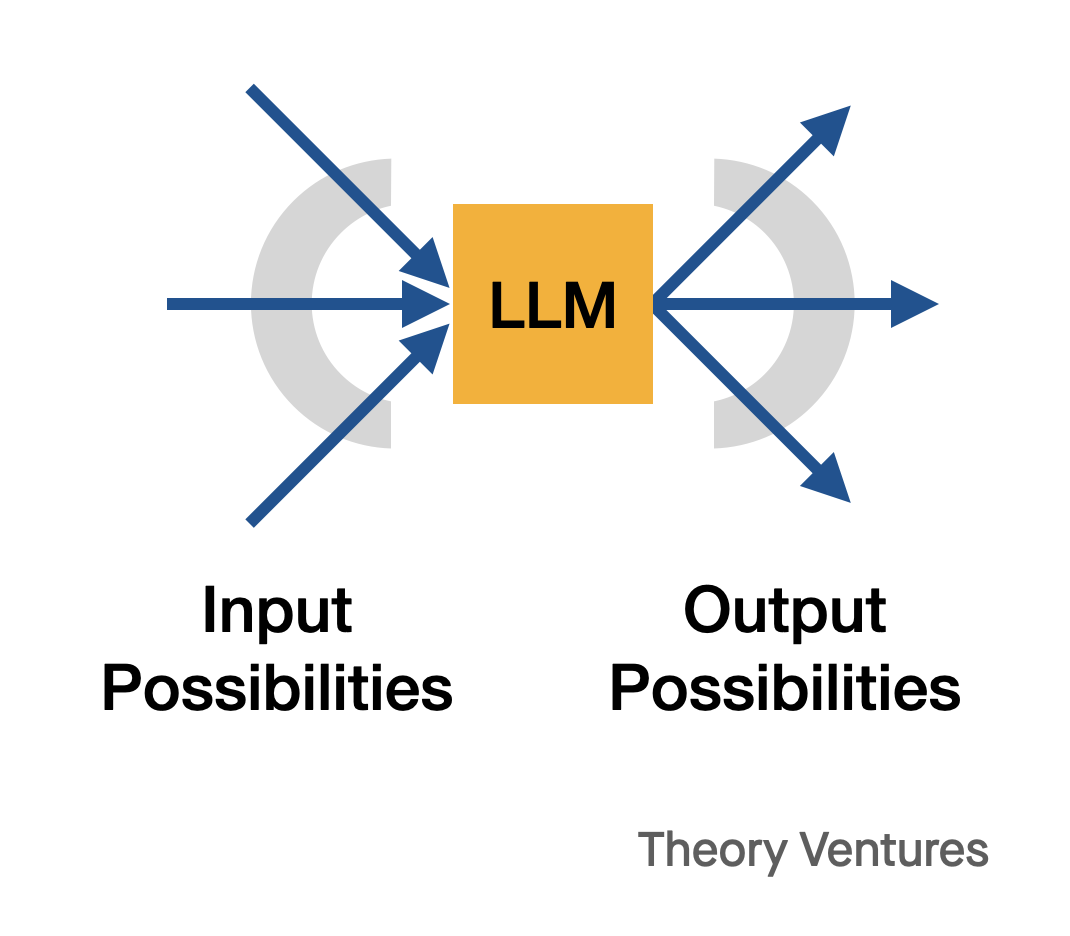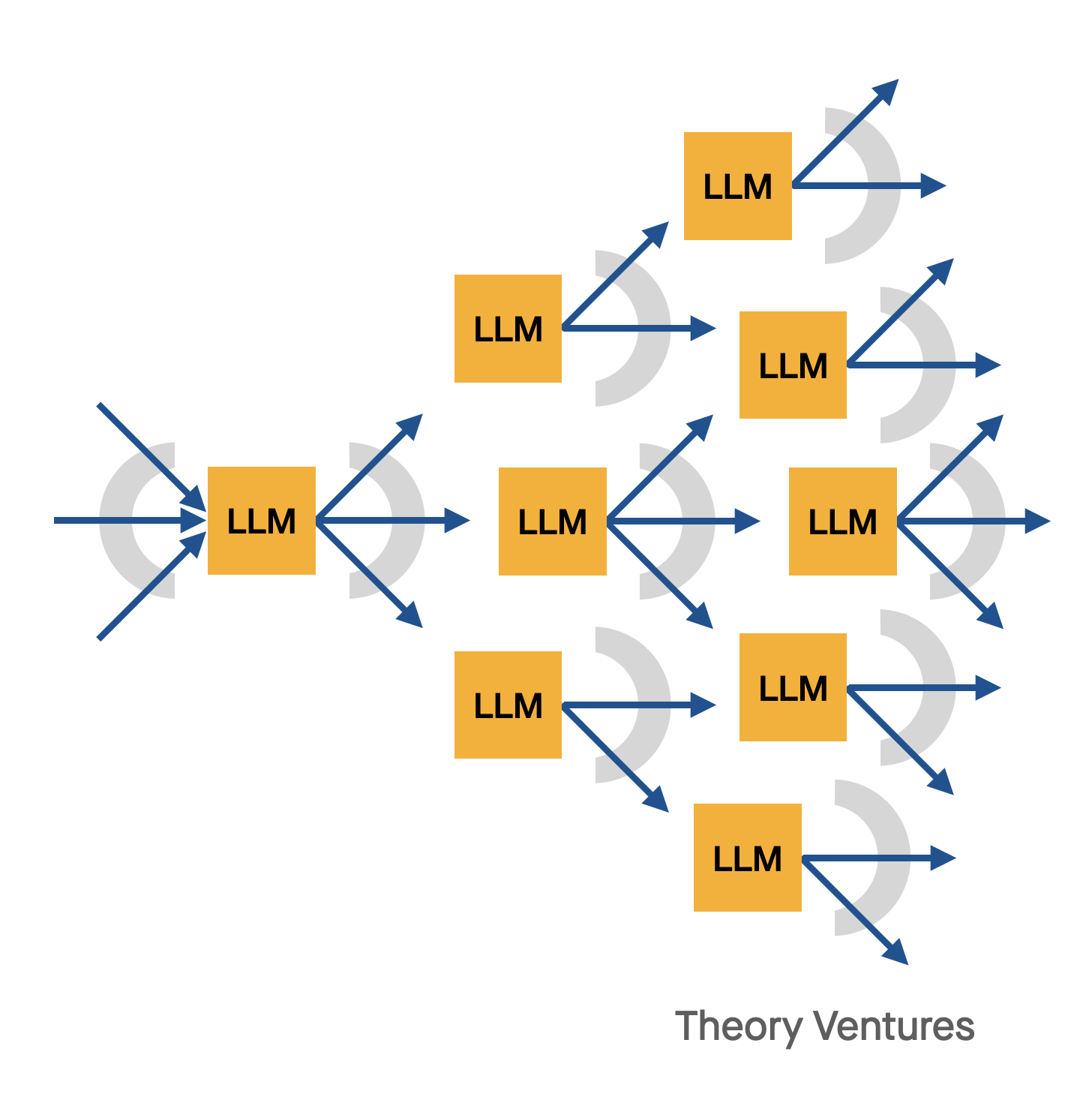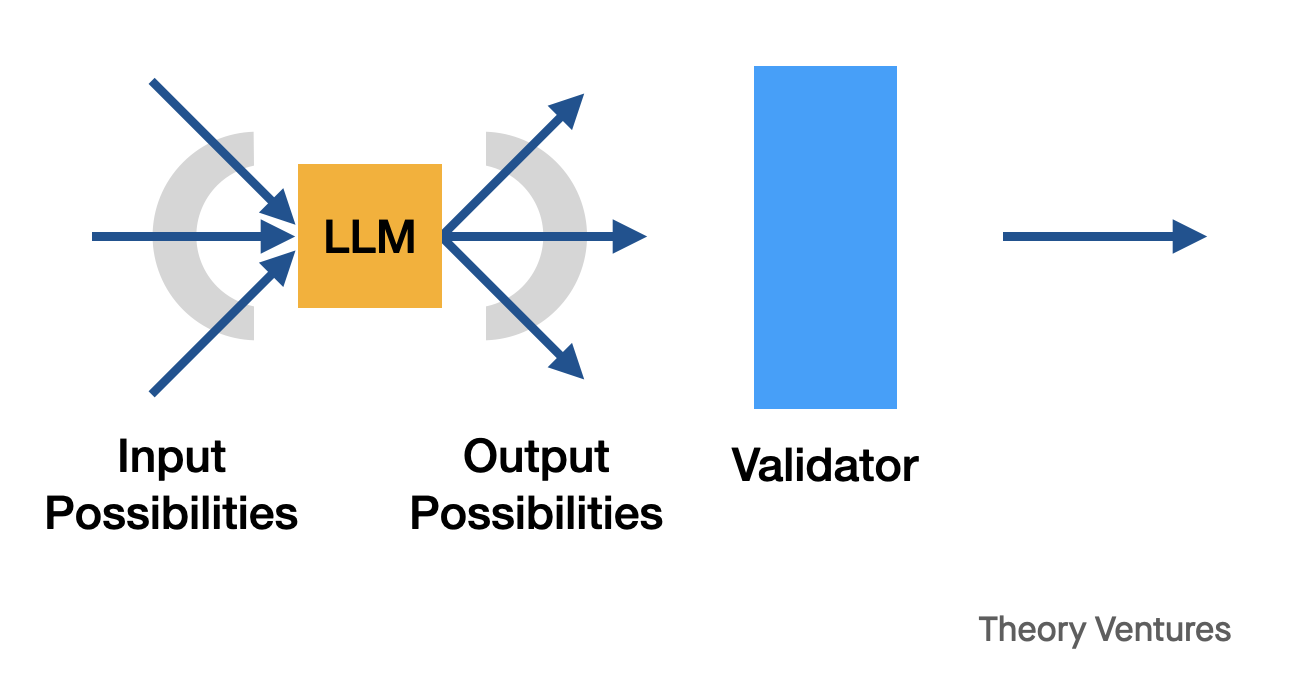A Series of Unfortunate Decisions
When a person asks a question of an LLM, the LLM responds. But there’s a good chance of an some error in the answer. Depending on the model or the question, it could be a 10% chance or 20% or much higher.
The inaccuracy could be a hallucination (a fabricated answer) or a wrong answer or a partially correct answer.

So a person can enter in many different types of questions & receive many different types of answers, some of which are correct & some of which are not.
In this chart, the arrow out of the LLM represents a correct answer. Askew arrows represent errors.
Today, when we use LLMs, most of the time a human checks the output after every step. But startups are pushing the limits of these models by asking them to chain work.
Imagine I ask an LLM-chain to make a presentation about the best cars to buy for a family of 5 people. First, I ask for a list of those cars, then I ask for a slide on the cost, another on fuel economy, yet another on color selection.
The AI must plan what to do at each step. It starts with finding the car names. Then it searches the web, or its memory, for the data necessary, then it creates each slide.

As AI chains these calls together the universe of potential outcomes explodes.
If at the first step, the LLM errs : it finds 4 cars that exist, 1 car that is hallucinated, & a boat, then the remaining effort is wasted. The error compounds from the first step & the deck is useless.
As we build more complex workloads, managing errors will become a critical part of building products.
Design patterns for this are early. I imagine it this way :

At the end of every step, another model validates the output of the AI. Perhaps this is a classical ML classifier that checks the output of the LLM. It could also be an adversarial network (a GAN) that tries to find errors in the output.
The effectiveness of the overall chained AI system will be dependent on minimizing the error rate at each step. Otherwise, AI systems will make a series of unfortunate decisions & its work won’t be very useful.